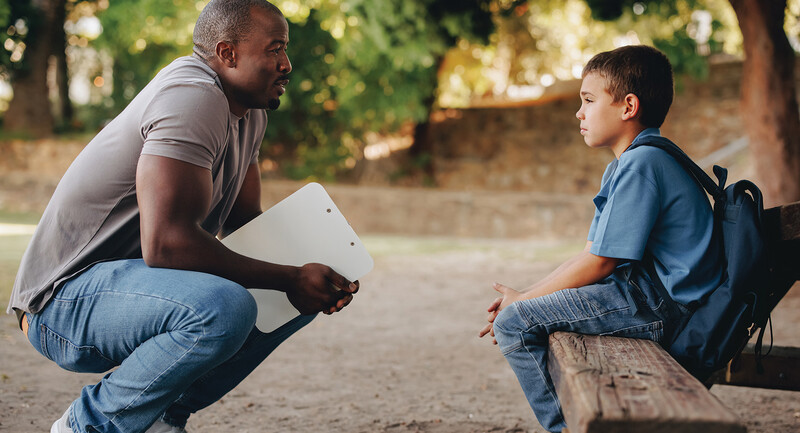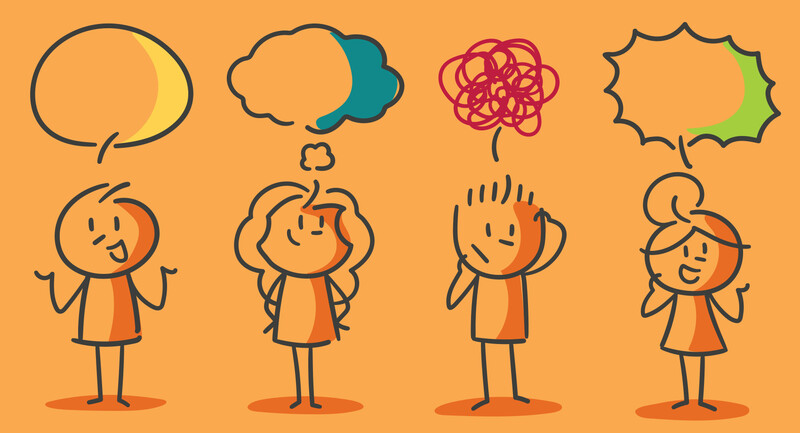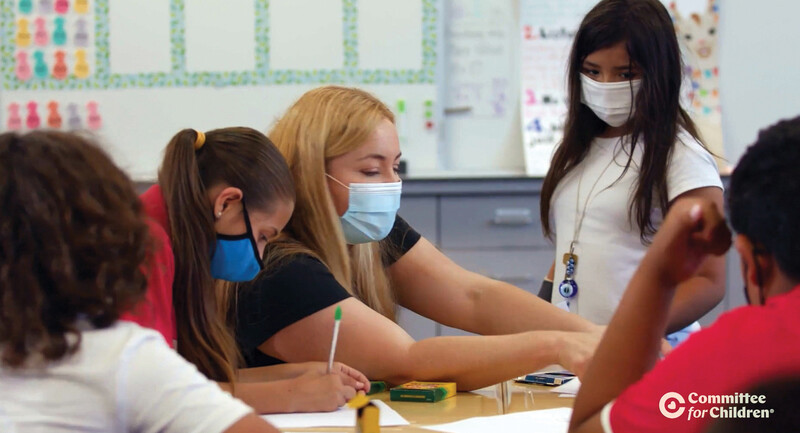Traditionally, classroom management has pitted teachers against students: We are all Sheriff Will Kane in High Noon, left to face a ruthless band of outlaws alone. It is our job to take control, to make them pay attention. Yet, if we've heard a teacher's work discussed in this way—or even framed our own work in this way—we've also likely felt that something was deeply wrong. If we became educators because we care about children, then why are we so often at odds with them? If school is a place to learn and grow, then why do we spend so much time correcting and disciplining?
Years ago, I entered my first year of teaching with two goals: teach my content and control my class. Teaching content was the easy part. Being the lone sheriff was hard—really hard. It was a grim time for me and for my students. Some of us got along great, but for others it was a simmering semester of conflict.
As I grew into teaching, I became more adept at classroom management, but it wasn't until attending a program on cooperative learning that my epiphany occurred: The only person's behavior I can control is my own. Instead of trying to control my class, I had to nurture an atmosphere and design opportunities that would help my students choose positive behavior, rather than be coerced into it. Now I was no longer the lone sheriff; our class (not my class) became a community whose members looked out for one another. My students were working with me, not against me. Here are the keys that unlocked the door.
Model Positivity
If we want kids to make positive behavior choices, then we must model these positive behaviors consistently—not only when we have time or when we're having a good day. Yes, the five minutes before classes may be just enough time to grade a paper or revise the attendance list. But that's pocket change compared to the long-term investment made by welcoming each student by name and with a smile that sends the message, "You're important."
During class, teachers can work hard to notice successes versus slip-ups. And, at the end of the period, we can return to the door and say goodbye to each student with a wish to "Have a good day!" or—better yet—notice a positive contribution they made in class. As you get to know your students better, the more distinctive contributions you will notice, and the more your students will see that you take a genuine, sustained interest in them.
Get Acquainted
When students choose their own groups, they typically choose their friends because working with those we know is comfortable. But to create a classroom of inclusiveness, kindness, empathy, and diverse thinking, students must get to know and work with those outside their social circle. One way to break down social barriers among students is through ongoing interviews. Start by modeling these interview steps for the class with a willing student partner. Then instruct students to return to their own, randomly chosen partners for quick interviews.
- Present a low-risk topic: pizza, favorite movie, pets. Once students understand the interview procedure, they will enjoy developing their own topics.
- One partner acts as the interviewer while the other is the interviewee. The interviewee starts by sharing a personal connection or story related to the topic while the interviewer listens carefully.
- Now the interviewer asks her partner an open-ended question based on something the partner said.
- The interviewee answers the question with as much detail as possible so that he gives the interviewer enough material on which to base another question.
- The line of questioning continues with the emphasis on the interviewer being a careful listener in order to learn as well as ask thoughtful follow-up questions. At no time should the interviewer turn the conversation back to herself.
- Partners repeat this question and answer format for about two to three minutes. Then they switch roles and start a new interview on the topic.
- As time concludes, prompt partners to thank each other for the interview.
Starting any collaborative academic task with interviewing enables students to practice the skills necessary for the upcoming discussion. Plus, students who get to know each other are much more interested in each other's ideas and also more willing to share their own.
Make It Social
Humans are social creatures. Teaming together is what has enabled our species to survive as long as it has, and adolescent brains are programmed to identify with and connect with their peers. Therefore, it makes sense for teachers to capitalize on the brain's desire for interaction by designing ways for students to work together. For best results, keep initial collaborative assignments short (10 minutes at most) and create work that can be completed with only one partner. Student pairs require less sophisticated social skills because they need to focus on only one conversation partner, and partner work is easy for teachers to monitor and facilitate as they scan and move about the room.
Figure
Source: From Reading and Writing Together: Collaborative Literacy in Action (p. 61), by N. Steineke, 2002, Portsmouth, NH: Heinemann. Copyright 2002 by N. Steineke. Reprinted with permission.
Finally, when students engage each other in rich and diverse discussion, they are likely to enter flow—what researcher Steven Kotler calls "an optimal state of consciousness where we perform our best." Deeply engaged students will also exhibit far more impulse control, says researcher Martin West and colleagues in a 2014 study.
Reflect and Celebrate
As students collaborate successfully, it's important for them to analyze that success as well as refine skills that will result in ever more effective and enjoyable collaboration. Whenever students work together, groups should end by discussing this question: What were three things members in this group said or did that helped us enjoy our time together, learn the content, and keep everyone involved? In the beginning, keep students focused on behaviors that enhance the group versus those that detract.
As their collaboration experience grows, groups can also begin thinking about which skills might help them work together even better. For example, I found students routinely asking how they could better express friendliness and support to one another, so together we developed a T-chart that defined that skill (above).
The next time groups met, their goal was to see how many of the T-chart behaviors they could use and what new behaviors they could invent and add to the chart. Though using any new skill feels phony and stilted at first, with enough practice, friendliness and support eventually become integrated skills that students will use spontaneously when the need arises.
Ask for Help
Ironically, when I most needed classroom management advice that first year, I never thought to tap a readily accessible source: my students! While we teachers spend our lives toiling away, mostly isolated from other educators, students roam the building observing teachers day after day, year after year. If you ask your students how other teachers they've encountered—no need to bring up names—solved a problem, you'll likely find several viable solutions, considering that your students just now crowdsourced decades of teaching expertise.
After they've shared the teacher solutions, follow up with another question. "If you were me, how would you solve this problem?" Lots of times, just putting a problem out on the table for discussion diminishes its power, bringing a resolution closer. More importantly, you're demonstrating to students that you do not have all the answers and that you respect their thinking, experience, and insight.
Don't Take it Personally
Did you know that adolescent brains have difficulty correctly identifying the facial expressions and emotions of others? Although adults are accurately advised by their prefrontal cortexes, adolescents' developing brains rely much more on their limbic systems, which interpret events in an instinctive and far more emotional way, according to research from Deborah Yurgelun-Todd and others. That's why when an interpersonal classroom conflict occurs, students easily misinterpret the other's intent and then overreact in impulsive, highly emotional displays.
Understanding this physiology-influenced behavior should enable us to do a better job at not taking a student's impulsive behavior personally. Instead, because we have the advantage of getting to process the events with an adult brain, we need to step back, take a deep breath, and offer students what will enable them to grow and flourish: patience, listening, care, empathy, and honest dialogue.
Gaining Community
I crossed paths with a former student the other day in, of all places, the public library. As an English teacher, I can't tell you how gratifying that was. Though I didn't recognize him, he made a beeline to me, re-introduced himself, and then without hesitation stated, "For years, I've been hoping to run into you because I wanted to thank you. I always felt welcomed and included. I felt like I was part of the group and always looked forward to your class."
His memory wasn't a result of "sheriff-style" classroom management. It was a result of every student in that room recognizing how important it was for them to offer their friendship and support to every other student in that room, thus ensuring the success of all. When I let go of classroom control, something much more valuable filled its place: classroom community.








